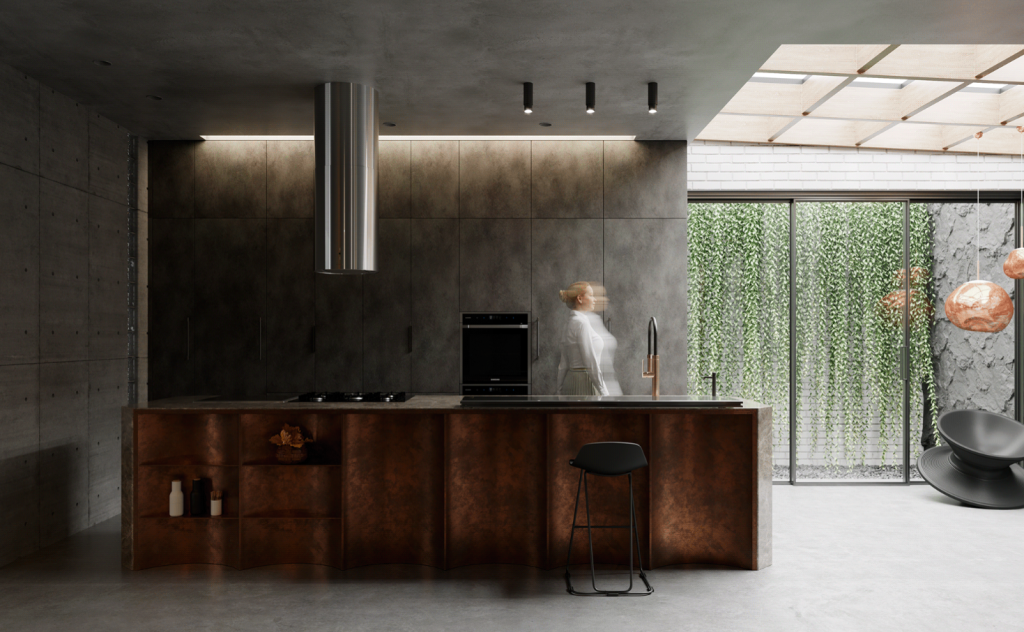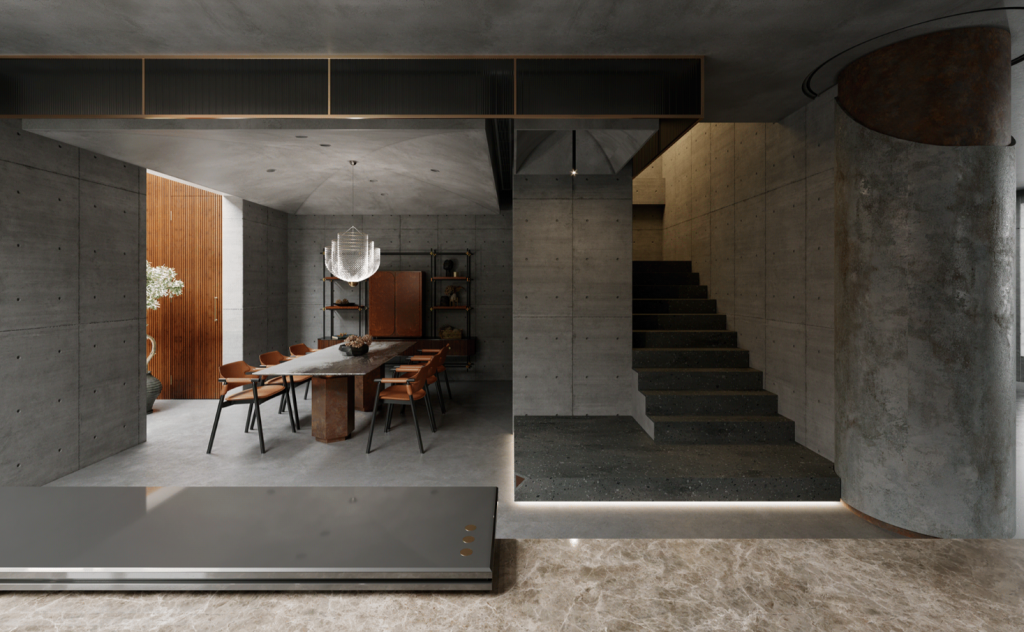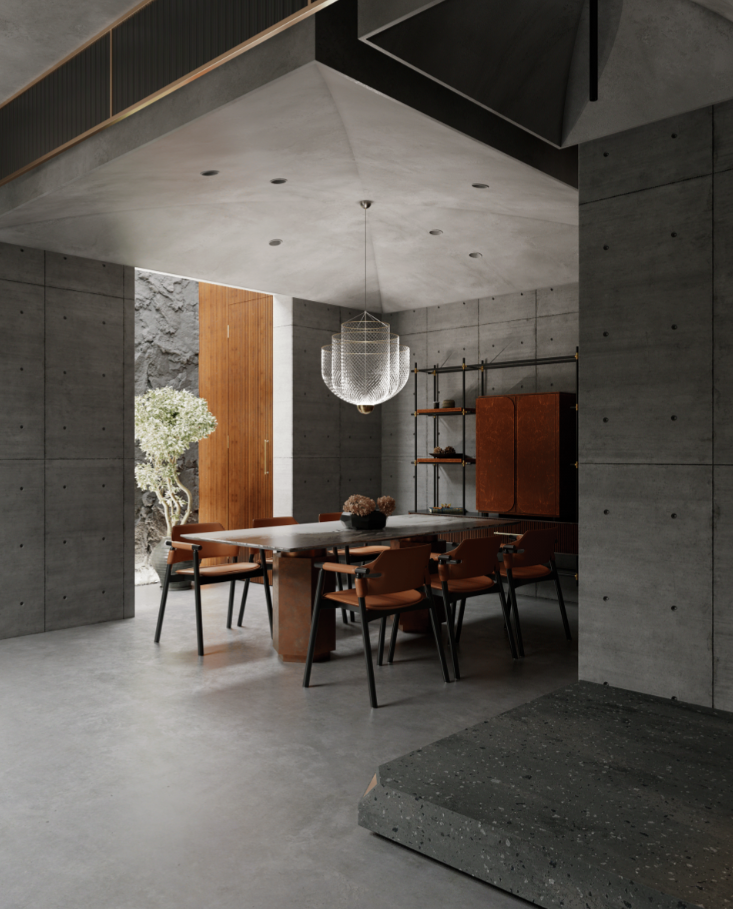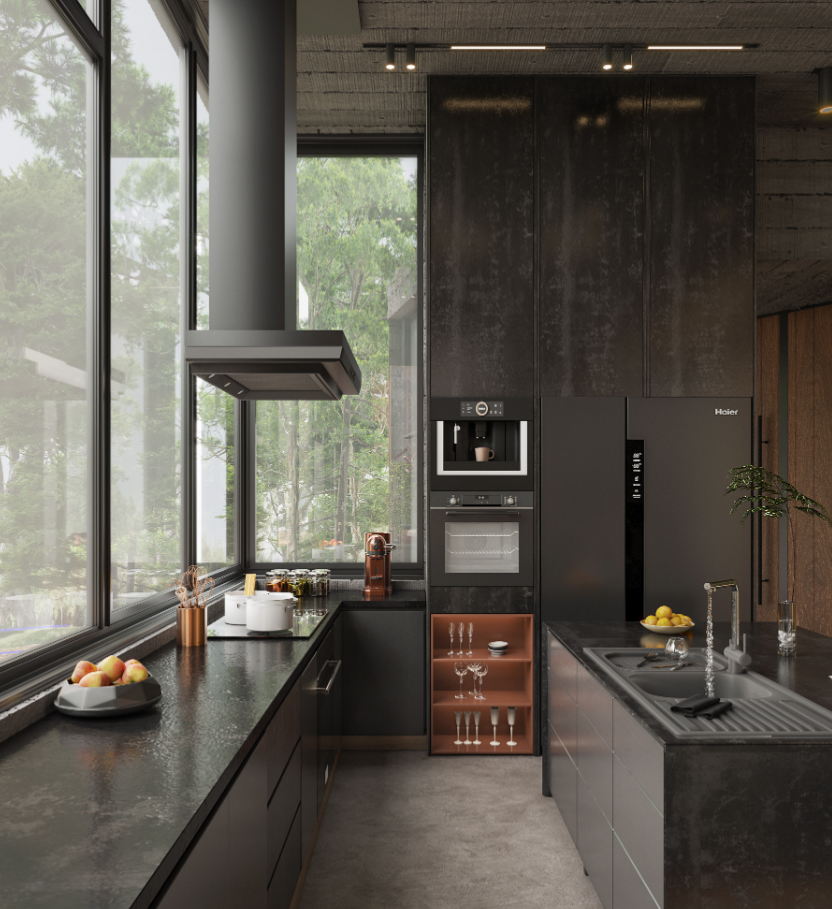BRUTALIST
Brutalist design, inspired by the architectural movement, embraces the raw beauty of concrete and austere materials, using bold geometric forms and exposed structures to shape interior spaces.

Brutalist interior design is a bold and distinctive architectural style that emerged in the mid-20th century. It is characterized by its use of raw, exposed materials and a sense of rugged, industrial aesthetics. Here are the key features and details of Brutalist interior design:
1. Raw Materials: Brutalist interiors prominently feature raw and unrefined materials such as exposed concrete, bare brick walls, unpainted steel or iron beams, and natural stone. These materials are left in their natural state or with minimal finishing, showcasing their texture and authenticity.
2. Geometric Forms: Brutalism often incorporates strong and geometric shapes, such as angular lines, blocky forms, and bold, sculptural elements in both the architecture and furnishings.
3. Minimalist and Functional: Brutalist design adheres to a minimalist philosophy, focusing on functionality and practicality. Ornamentation is typically minimal, and furniture is often simple and utilitarian.
4. Large-Scale Structures: Brutalist architecture often involves massive, imposing structures with an emphasis on grandeur and scale. This can be translated into interior spaces with high ceilings and expansive open layouts.
5. Natural Light: Despite the use of rugged materials, Brutalist interiors often prioritize natural light through large windows and open spaces, creating a sense of contrast between the raw materials and the illumination.

6. Industrial Elements: Industrial features like exposed ductwork, pipes, and mechanical components may be intentionally incorporated into the design to enhance the industrial feel.
7. Sculptural Lighting: Lighting fixtures in Brutalist interiors can be sculptural and dramatic, often made of concrete, metal, or other industrial materials.
8. Minimal Decor: Decorative elements are typically sparse, with an emphasis on the architectural features of the space. Art and accessories are chosen carefully to complement the Brutalist aesthetic.
Brutalist interior design is not for everyone, as its stark and industrial aesthetics can appear imposing to some. However, it remains a distinctive and influential style, often found in modernist and Brutalist architectural structures and buildings.








